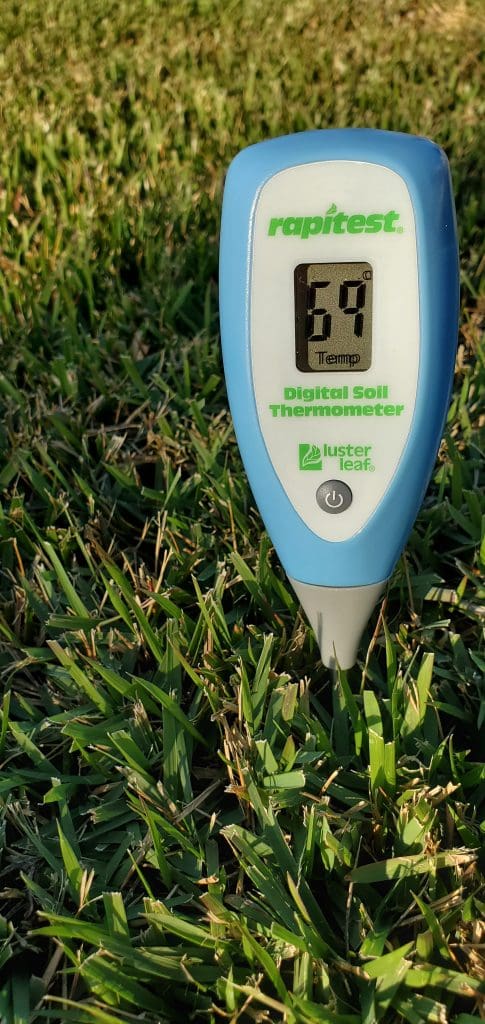
It’s that time of the year again. Time to treat customers’ properties with preemergence herbicides before weeds like crabgrass can rear their ugly heads.
But do you understand the science behind this practice? Dr. Tina Bond, technical service manager with FMC Professional Solutions, shares some insight into preemergence herbicides and how to use them effectively.
“Some of the most common mistakes with preemergence herbicide applications is getting the product out too late, not watering in the application and not getting enough coverage,” Bond says. “Following the manufacturer’s label recommendations will help minimize mistakes and guide you to results you expect from a preemergence herbicide.”
All About Temperature
Calendar dates or environmental cues are often used to know when to apply a preemergence herbicide, but this can result in poor weed control.
“It has been common practice to use certain environmental indicators, such as when forsythia, dogwood, or daffodils bloom to time preemergence applications,” Bond says. “Unfortunately, in many parts of the country target weeds may have already emerged before the environmental indicators have occurred. Using this method of timing renders a preemergence application useless.”

Instead, preemergence herbicides should be applied based on the germination of the weed you are trying to control. In the case of crabgrass, the seeds germinate when the soil temperature reaches roughly 55°F for several days at 2-4” soil depth. The variability in soil temperature based on seed germination and your location is critical for determining when to apply.
“In Massachusetts, this could occur sometime around late April to early May,” Bond says. “In North Carolina, you may be applying in early March or April. In Bakersfield, California, crabgrass has germinated as early as January 30!”
As to how to determine the soil temperature, Bond says it’s as easy as taking your own temperature. Simply plunge a soil thermometer 2-3” in the soil and wait for the temperature to stabilize.
“One of the tricks to getting to the right depth is to use a permanent marker to mark 2” up from the tip of the probe,” Bond says. “This will help make sure you’re at the right depth each time.”
What Do Preemergence Herbicides Work On
When applied at the right time, preemergence herbicides can prevent weeds from developing. They are commonly used to control annual grassy weeds like crabgrass and goosegrass as these weeds produce profuse amounts of seeds.
“Preemergence herbicides will not control plants that are growing or established,” Bond says. “Understanding the lifecycle of a plant can also help determine the best timing of preemergence herbicides to get the best control. Summer annuals like crabgrass and goosegrass grow in the spring and die in the winter. These are best controlled with spring preemergence herbicide applications.”
If you’re trying to control winter annuals like annual bluegrass, henbit, chickweed or Carolina geranium, these are best controlled with fall preemergence herbicide applications as they grow in the winter and die in the summer.
Some preemergence herbicides are more specific for annual broadleaf weed control so be sure to review the product label to determine which weeds the herbicide will control. It’s a common misconception that preemergence herbicides kill weed seeds. This is not the case as preemergence herbicides do not stop seed germination. Instead, when the seed begins to grow it makes contact with the herbicide barrier and it inhibits root and/or shoot growth so the weed cannot develop into a mature plant.
“Contact between the emerging or developing seedling with the herbicide must occur for the application to be successful,” Bond says. “This is why it is so important to incorporate preemergence herbicides into the soil.”
Because of the variability in seedling germination, applications of preemergence herbicides may need to be made more than once.
“Fortunately, these herbicides have very good residual (effect) but are eventually broken down over time by soil microbes,” Bond says. “If you’re seeing ‘gaps’ or breakthrough in your preemergence application, you may have to readjust the timing or reapply to get longer-term control of emerging seeds. Split applications may be another solution if this is feasible for your situation.”
Liquid or Granular?
Whether you choose to use liquid or granular preemergence herbicide formulation, good coverage is the key. Bond says coverage is better with a liquid, but you can see similar results with a granular application if you’re applying at the proper rate.
“Weather, weed pressure, time (as far as labor), effort involved, even ability to mix other products in with the application are some of the reasons why you may choose granular applications over liquid,” Bond says.
Some of the pros for liquid applications include flexibility in terms of being able to add other products to the tank and the ability to apply the product uniformly. Drawbacks to liquids are the potential for spills and the inability to measure accurately for smaller applications.
Meanwhile, the benefits of using granular products are they are easier to apply and easier to clean up if there is a spill. To ensure maximum efficacy with granular products, it comes back to good coverage.
“Ultimately, choosing granular versus liquid comes down to what works best for you,” Bond says. “Training technicians on proper application technique can help maximize herbicide coverage and effectiveness leading to fewer breakthroughs and callbacks.”
Whichever formulation you choose, the herbicide still requires incorporation with irrigation or rainfall for the best results.
Bond also notes if weed pressure is high, sequential applications can provide better control over a longer period.
“A one-time preemergence herbicide application can be effective if weed pressure is low but may not last due to breakdown by microbes as soil temperatures warm,” she says.
Created in partnership with the experts at FMC True Champions

